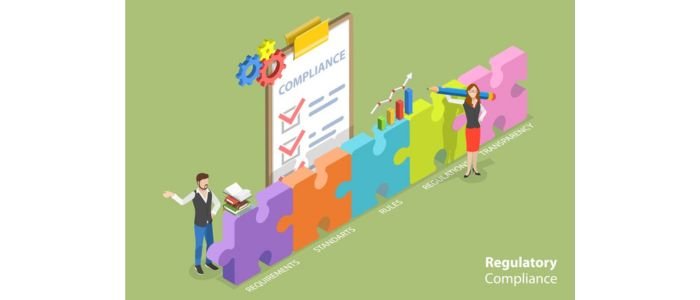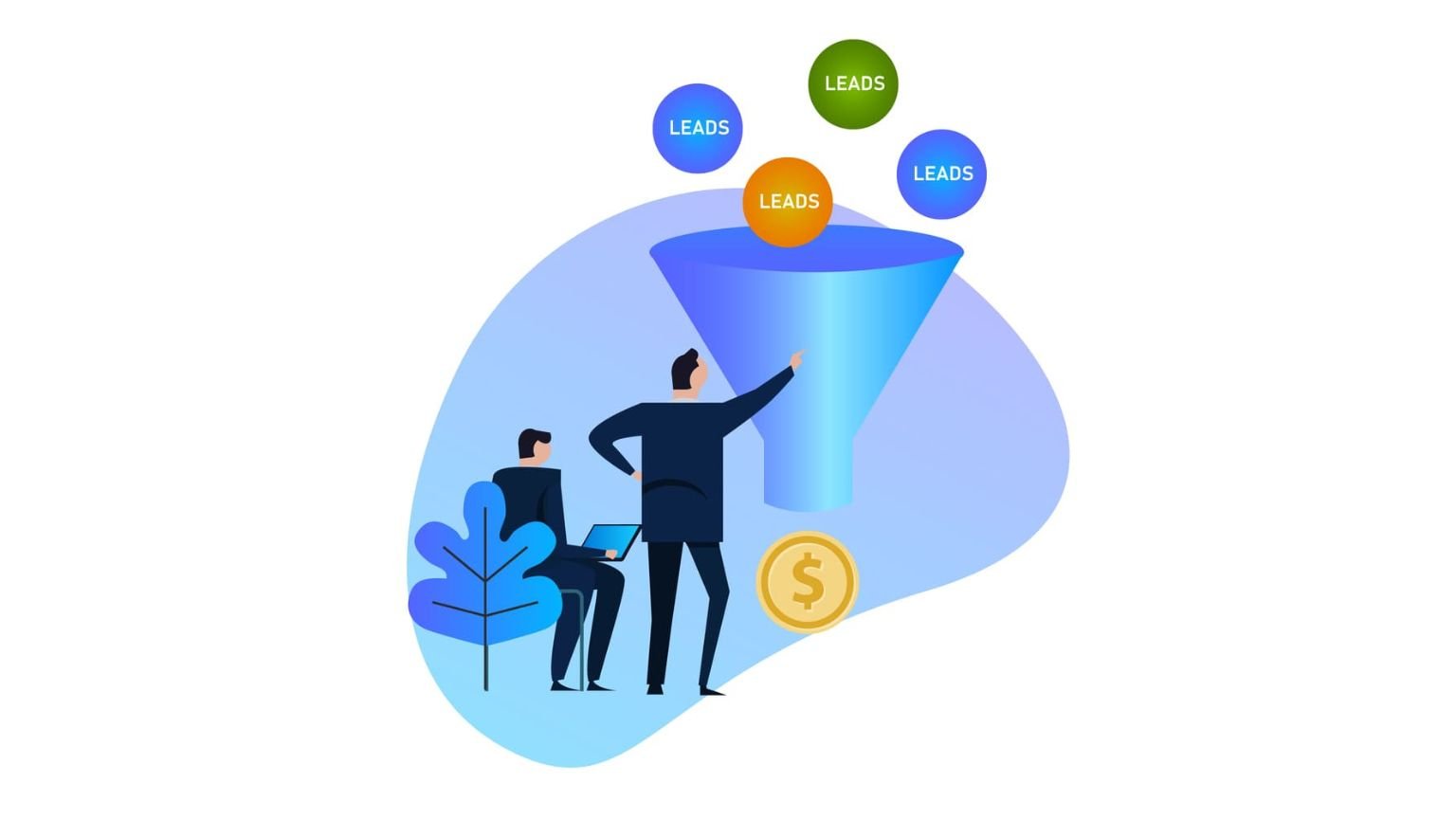Filtering Leads for Successful Admissions
In today’s competitive era, rehabilitation centers and healthcare facilities receive a large volume of inquiries from patients. Since not all leads become admissions, this is where lead filtering becomes necessary.
So what is lead filtering? Lead filtering in the context of admissions is related to the qualifying and screening of inquiries based on specific or set eligibility criteria before they move to the end of the funnel. The criteria can include clinical requirements, financial capability, insurance coverage, or demographic details, depending on the nature of the addiction treatment center. Identifying which leads meet the prerequisites early on, recovery centers can center their resources on patients who want to benefit from the services.
Why Ensure Eligibility Before Admissions?
Ensuring eligibility before admissions is necessary for many reasons. Firstly, it improves cost-effectiveness by reducing marketing spend and time on unqualified leads. Secondly, it ensures compliance with regulatory and legal standards. Finally, it increases resource optimization, ensuring treatment slots, beds, and staff are reserved for patients who qualify.
A structured lead filtering process creates a better experience for the patients and drives higher conversion rates, as they get clear expectations and a timely response about their admission.

The Benefits and Importance of Filtering Leads
Filtering leads before transferring them via the admission process is crucial. Rehabilitation and healthcare sectors deal with large volumes of inquiries, since not every inquiry does not become an admission. This is because not all leads met the eligibility criteria for treatment or enrollment. Proper filtering reduces extra operational costs and increases compliance efficiency. In fact, 61% of advertisers say that lead generation is their No.1 challenge, making it more important to make sure that every processed lead is qualified. Below are the reasons, benefits, and importance of filtering leads.
– Improved Applicant Experience
Addicts wanting to recover value clear communication during the admissions process. When unqualified prospects are identified at an early stage, recovery centers can reduce frustration for both parties, set clear expectations, and provide immediate feedback. For eligible patients, this method means a more personalized experience and quicker responses. Filtering improves the treatment facility’s reputation, builds trust, and enhances the overall patient’s journey.
– Better Resource Allocation
Support staff and admission teams have limited resources, and when these resources are spent on unqualified leads, it reduces the capacity to serve and creates inefficiencies for those who truly need help. Filtering makes sure that all resources are reserved for the ideal patient who has a better chance of converting. This further benefits addiction treatment centers with balanced operations and improved productivity.
– Higher Admission Rates
Filtering out unqualified leads means that the remaining individuals will likely convert. When the admissions pipeline is full of leads that meet every part of the criteria, the conversion process becomes more predictable and smoother. Higher admission rates translate into improved stability in planning treatment capacity and better business outcomes for recovery centers.
– Saves Operational & Marketing Costs
Marketing campaigns become expensive in the addiction treatment space, since every acquired lead represents an investment. By implementing a robust lead filtering system, addiction treatment centers can increase return on marketing spend by navigating efforts towards the most promising leads. Operational costs are reduced when the admissions staff only works on viable patients.
– Reduces Compliance Risks

For rehabilitation centers, compliance is a priority. Enrolling an ineligible patient can lead to financial, ethical, and legal repercussions. Addiction treatment facilities have strict admission policies that are followed to maintain credibility. Leaf filtering is a safeguard by making sure that patients only meet the necessary recovery centers’ and regulatory standards proceed to the next phase. This protects the organization from unnecessary risks and reduces the likelihood of compliance violations.
– Improves Conversion Rates
Filtering leads enables you to prioritize individuals who are interested and eligible. When the admissions team spends time warming high-quality leads. The chances of converting these leads into admissions increase significantly. This targeted strategy makes sure that your recovery center’s pipeline is filled with patients who have the highest probability of admissions.
– Prevents Wasted Time on Unqualified Leads
One of the main challenges admissions staff face is dealing with unqualified leads. Such inquiries fail to meet basic criteria. Without a filtering system, teams end up spending hours on following up baseless leads, while this time could be spent on ideal patients. With lead screening in the first stage of processing, recovery centers can focus attention where it matters and eliminate unqualified patients.
5 Common Admission Eligibility Criteria
Making sure admission eligibility requires evaluation and other factors that decide whether the lead is a good fit for your treatment center or not. By implementing clear criteria in the early process, you can deliver a better experience for your clients and team, maintain compliance, and streamline admissions. Below are the key eligibility criteria to consider.
Financial Capability
Financial eligibility is an important consideration in admissions. For rehab facilities, insurance verification is necessary to avoid nonpayment issues and denied claims. Evaluating financial capability in the first stage ensures that resources are allocated to patients who can complete the program and prevent future complications.
Demographics Requirements
Demographics have a huge role in admissions. Many recovery centers have age-based criteria to ensure suitable placement. For instance, a recovery center may only accept people over 18, while other facilities accept patients above the age of 21. Location matters for recovery centers with international enrollment, specific healthcare programs, and residency-based programs. Screening for such factors in the first place ensures compliance with program rules and prevents wasted time.
Program Readiness
Beyond meeting the basic criteria, estimating whether the patient is prepared for the requirements of the program is also important. This includes readiness for the commitment requirements for the rehabilitation protocols. For example, recovery centers look for signs of readiness to participate in recovery. This step ensures the program benefits the patient and the recovery center, reduces drop off rates, and improves outcomes.
Ethical & Legal Consideration
Admissions processes should adhere to the ethical and legal standards. This involves compliance with privacy regulations like FERPA and HIPAA and verifying identity documents. Legal checks protect the recovery centers from liability while making sure that only eligible and qualified patients move forward.
Clinical Prerequisites
Clinical prerequisites of treatment centers, like level of care, medical evaluation, and specific diagnosis, are necessary to decide which program suits the patient. Checking these requirements properly in the lead filtering process assures that patients are placed in the right program with their clinical or qualification needs.
How to Filter Leads: Step-by-Step

Effectively filtering leads needs a step-by-step and structured process that fuses human oversight with technology. Below is a detailed breakdown of the stages to successfully filter leads.
Step 1: Initial Data Collection
The first step to filter leads is to gather relevant and accurate information from patients. This stage sets the basis for determining overall lead quality and eligibility. Below are the methods of data collection:
- Email Responses: Automated email sequences can incorporate questionnaires to verify program eligibility and interest.
- Phone Inquiries: Call center or admissions staff can gather additional information during the conversation, especially for leads generated via phone campaigns.
- Online Forms: Pre-qualification forms on landing pages and websites can capture important data, like financial readiness, location, and age.
It is important to keep these forms comprehensive yet concise enough to determine eligibility. Asking a lot of questions in the first stage usually discourages the audience from completing the form, so make sure to only gather important details first.
Step 2: Manual vs. Automated Review
After the data is collected, the next step is to validate and review it. Recovery centers usually balance humans with automation judgement.
When Manual Review is Necessary:
- Confirming legal documents or insurance coverage
- Assessing program fit via personal statements and motivation
- Evaluating complex qualifications, such as financial documentation and medical history
When Automation Works Best:
- Lead scoring based on pre-set eligibility rules
- Basic demographic checks
- Phone and email number validation
Automation reduces errors in repetitive tasks and speeds up the process. But human oversight is necessary for subtle decisions that technology cannot handle.
Step 3: Categorizing Leads
After validating, leads must be segmented into categories to allow prioritizing follow-up actions. A solid system makes sure that resources are efficiently allocated. Common lead categories are:
- Disqualified leads: Lack of necessary credentials or do not meet the eligibility criteria, like age restrictions.
- Potential Leads: Somewhat expresses intent and meets criteria but lacks required documentation or readiness.
- Qualified Leads: Meets most eligibility standards but could need additional support or clarification.
- Highly Qualified Leads: Shows strong intent to enroll and meets the complete eligibility criteria.
This categorization allows admissions staff to focus on leads with highest chances to convert and maintain engagement with patients for future opportunities.
Step 4: Communication Strategy for Each Category
The success of lead filtering depends on how you communicate with the lead at each stage of the funnel. Personalization is important at this stage. Customized messages and communication improve conversion chances and strengthen relationships. Each level needs a customized approach.
Qualified Leads:
- Assign a dedicated counselor to assist with completing requirements
- Send targeted emails addressing their specific needs
Highly Qualified Leads:
- Provide program timelines, financial details, and brochures
- Offer schedule consultations and enrollment guidance promptly
- Respond instantly with a personalized phone call or email
Potential Leads:
- Use drip email campaigns to warm leads over time until they are ready
- Share information content like FAQs, webinars, or blogs to build interest and trust
Disqualified Leads:
- Keep them in your CRM for potential future outreach if circumstances change
- Offer alternative programs or resources that could suit their situation
- Politely inform them of ineligibility and use a positive tone
Common Lead Filtering Metrics
Since inquiries are not equal, this makes lead filtering come into play. These metrics help recovery centers evaluate whether the patient is worth investing resources and time. By using measurable and clear factors, admissions staff can sift high-quality leads from those that may not convert. Below are 4 most important metrics for lead qualification.
a. Intent Verification
Intent is a determining factor for qualifying leads. Some patients could be just casually exploring options without having any plan to enroll, while others might be ready to get admitted. Asking questions like specific program interests, financial readiness, or their timeline for admission helps recovery centers to understand intent. This allows admissions staff to focus on patients who want to start the process and prevents time spent on window shoppers.
b. Engagement Level
Responsiveness of leads is another solid indicator of seriousness and interest. Patients who complete requested forms, respond to emails, and answer phone calls have higher intent. On the contrary, unresponsive leads despite several outreach attempts may not be worth dealing with. Tracking engagement allows recovery centers to follow-up leads that can convert.
c. Contact Accuracy
Precise contact details are important for follow-up and communication. A lead with fake email addresses or invalid phone numbers is not worth chasing. Applying verification tools like phone number checkers and email validators during the intake stage makes sure that your admissions staff is reaching the right people.
d. Lead Source Credibility
The source of the lead tells a lot about quality. Leads generated via trusted sources like official partnerships, verified marketing campaigns, and referrals are more reliable than those coming from unverified channels or random online forms. Tracking which channel delivers the most qualified leads allows recovery centers to invest in channels that deliver the best results and polish their marketing strategies.
9 Best Practices & Effective Methods for Lead Filtering
Implementing a hale lead filtering system is important for addiction treatment centers that want to optimize resources, improve conversion rates, and streamline admissions. An effective filtering system includes consistent practices, structured workflows, collecting data, and using the right tools to ensure that only qualified leads move ahead. Below are the proven practices and best methods that work together to build a reliable and efficient lead qualification system.
Continuously Update Eligibility Criteria
Admissions necessities evolve based on the recovery center’s priorities, program demands, and regulations. Regularly updating and reviewing your eligibility filters makes sure that you attract the right audience while staying compliant according to the current standards.
Use Multi-Step Filtering
An effective lead filtering system cannot be achieved in one step. The most successful ones have multiple phases, like online form submission, initial call verification, document validation, and complete eligibility check. This layered strategy ensures that only highly qualified leads progress via the funnel.
Pre-Qualification Forms
One of the most effective and simplest ways to filter leads is using pre-qualification forms. These are the forms that are sent via email and are seen on landing pages and websites. Ask patients key questions to check eligibility. Examples of questions to ask:
- Desired start date
- Program of interest
- Ability to pay or insurance coverage
- Clinical needs
- Location and age
Asking these questions in the initial stage allows recovery centers to eliminate unqualified leads before they set foot in the pipeline. The first interaction with the lead is your only chance to collect meaningful information. Asking such targeted questions ensures you are able to make an initial judgement on eligibility without any unnecessary back-and-forth.
Train Staff for Consistent Screening
Humans do oversight even with automated systems. Employees should be trained to follow the same scripts and criteria during the phone screenings to maintain accuracy and fairness. Consistency protects against compliance risks and reduces errors.
Lead Scoring Systems
Lead scoring allocates numerical values to various eligibility factors, ensuring that leads rank according to their likelihood of being converted. A structured scoring system makes sure that resources are focused on patients who meet critical requirements. Key factors used in lead scoring are:
- Source credibility
- Responsiveness to outreach
- Financial readiness
- Clinical qualification
CRM Integration & Automation Tools

Technology changes everything in lead filtering for addiction treatment centers. Various platforms can automate different parts of the qualification process, from scheduling follow-ups to scoring leads. By minimizing manual work, automation maintains consistency and accelerates the screening process. Major benefits of automation tools are:
- Integration with marketing systems for better ROI tracking
- Centralized dashboards for team visibility
- Automated alerts for high-scoring leads
- Instant lead data categorization and capture
Call Center Screening
Personal interaction will remain the most powerful way to qualify leads. Call center screening enables trained teams to verify information provided in forms, gauge the patient’s intent, and clarify eligibility criteria. This matters because:
- Builds rapport with patients in the early stages of the process
- Identifies genuine interests
- Helps confirm information accuracy
Using standardized scripts during inquiry calls ensures compliance and consistency, reducing the risk of bias or miscommunication.
Challenges in Filtering Leads
Filtering leads comes with different challenges that affect efficiency and accuracy. Addressing these challenges is necessary for addiction treatment centers that want to maintain operational effectiveness, compliance, and fairness.
Balancing Accuracy with Speed
Speed is crucial in admissions since delayed responses usually result in lost opportunities. Rushing towards the filtering process can also lead to mistakes, like overlooking high-quality leads or admitting an ineligible patient. On the contrary, an extra careful process can slow down conversion rates. The solution is to implement a hybrid approach, using manual review for delicate decisions like financial readiness or motivation, email validation, and demographic checks.
Avoiding Bias in Filtering
Maintaining fairness in the filtering process is critical for addiction treatment centers operating under strict rules and regulatory guidelines. Bias can crawl in when subjective factors, like overriding objective eligibility criteria and personal judgements during manual screening. This results in legal consequences and undermines ethical standards. Using documented protocols, lead scoring systems, and standardized questions ensures every lead is consistently evaluated.
Handling Inaccurate or Incomplete Information
This is the most common hurdle in lead filtering. Patients usually provide inaccurate details, like misleading financial information or wrong contact numbers. They also leave forms incomplete sometimes, making it difficult for admissions staff to decide eligibility and wasting time on following up. Designing user-friendly forms and implementing data validation tools reduces such issues.
Conclusion
Filtering leads is a strategic advantage that improves operational tasks. If done right, it ensures that each lead gets attention and shields your admissions staff from compliance pitfalls and wasted efforts. Consider it as building a bridge between action and interest: the smarter and stronger the bridge, the simpler it is to qualify patients. By combining human touch, structured processes, and technology, addiction treatment centers can provide a seamless experience that benefits the patients and the recovery centers.
FAQs
How often should recovery centers review their lead filtering criteria?
Eligibility requirements must be reviewed at least quarterly to stay lined up with changing recovery center’s goals and regulations.
What industries benefit the most from lead filtering?
Lead filtering is important for sectors like, addiction treatment centers, healthcare, education, real estate, and finance, where eligibility is necessary before onboarding.
Does lead filtering improve patient satisfaction?
Yes. By reducing unnecessary delays and giving clear and quick answers, filtering gives better experiences for patients.
Where do disqualified leads go after filtering?
Disqualified leads are added to a separate database for any future opportunities, targeted with educational content, or referred to alternative programs.


Leave a Reply